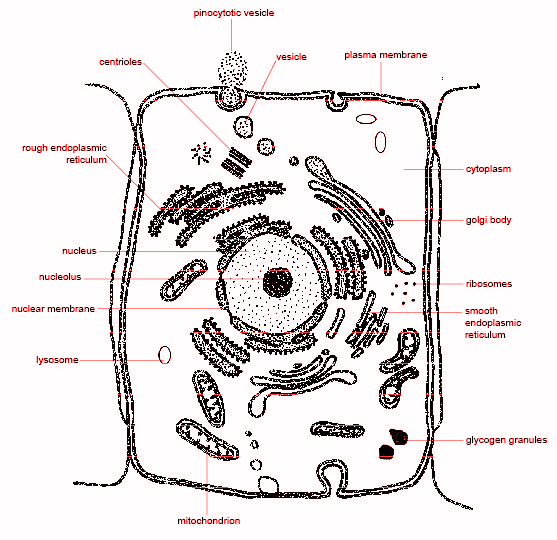
Draw and label the animal cell.
Answer
440.3k+ views
3 likes
Hint: All the animal cells are eukaryotic. They differ from plant cells as they do not contain any cell walls, just like a plant cell. They do not have any chloroplast and have smaller vacuoles.
Complete answer:
Animal cells are the basic unit of life in the organisms that belong to the animal kingdom. They composed of a true nucleus and a specialized structure known as organelles. The cell is surrounded by the cell membrane or the plasma membrane. The plasma membrane comprises all the components which are hung in the gel-like fluid known as cytoplasm. A eukaryotic cell is different from a prokaryotic cell as it has membrane-bound organelles like mitochondria, endoplasmic reticulum and Golgi apparatus. The animal cells are multicellular as several cells work together to compose an organism. As in the case of humans, which is a complex organism these cells can be highly special to perform different functions.

The multicellular organisms consist of other structures that give support to the other tissue and organs. Animal cells have various organelles that function together and allow the cell to perform its function. The nucleus contains all the genetic information and this genetic information is known as DNA. Ribosomes are the organelle that is found in both the eukaryotes and prokaryotes and it helps in the synthesis of protein. Endoplasmic reticulum functions in the transporting of proteins. Lysosomes provide digestive enzymes. Mitochondria is the organelle that gives energy to the cell.
Note: The various types of animal cells are skin cell, blood cell, nerve cell, muscles cell etc. A cell membrane is a type of semi-permeable membrane which is composed of protein and fats while the nuclear membrane is a double membrane structure which surrounds the nucleus.
Complete answer:
Animal cells are the basic unit of life in the organisms that belong to the animal kingdom. They composed of a true nucleus and a specialized structure known as organelles. The cell is surrounded by the cell membrane or the plasma membrane. The plasma membrane comprises all the components which are hung in the gel-like fluid known as cytoplasm. A eukaryotic cell is different from a prokaryotic cell as it has membrane-bound organelles like mitochondria, endoplasmic reticulum and Golgi apparatus. The animal cells are multicellular as several cells work together to compose an organism. As in the case of humans, which is a complex organism these cells can be highly special to perform different functions.

The multicellular organisms consist of other structures that give support to the other tissue and organs. Animal cells have various organelles that function together and allow the cell to perform its function. The nucleus contains all the genetic information and this genetic information is known as DNA. Ribosomes are the organelle that is found in both the eukaryotes and prokaryotes and it helps in the synthesis of protein. Endoplasmic reticulum functions in the transporting of proteins. Lysosomes provide digestive enzymes. Mitochondria is the organelle that gives energy to the cell.
Note: The various types of animal cells are skin cell, blood cell, nerve cell, muscles cell etc. A cell membrane is a type of semi-permeable membrane which is composed of protein and fats while the nuclear membrane is a double membrane structure which surrounds the nucleus.
Latest Vedantu courses for you
Grade 10 | MAHARASHTRABOARD | SCHOOL | English
Vedantu 10 Maharashtra Pro Lite (2025-26)
School Full course for MAHARASHTRABOARD students
₹33,300 per year
Recently Updated Pages
Master Class 11 Economics: Engaging Questions & Answers for Success

Master Class 11 Business Studies: Engaging Questions & Answers for Success

Master Class 11 Accountancy: Engaging Questions & Answers for Success

Master Class 11 English: Engaging Questions & Answers for Success

Master Class 11 Computer Science: Engaging Questions & Answers for Success

Master Class 11 Maths: Engaging Questions & Answers for Success

Trending doubts
Which one is a true fish A Jellyfish B Starfish C Dogfish class 11 biology CBSE

State and prove Bernoullis theorem class 11 physics CBSE

1 ton equals to A 100 kg B 1000 kg C 10 kg D 10000 class 11 physics CBSE

In which part of the body the blood is purified oxygenation class 11 biology CBSE

One Metric ton is equal to kg A 10000 B 1000 C 100 class 11 physics CBSE

Difference Between Prokaryotic Cells and Eukaryotic Cells




